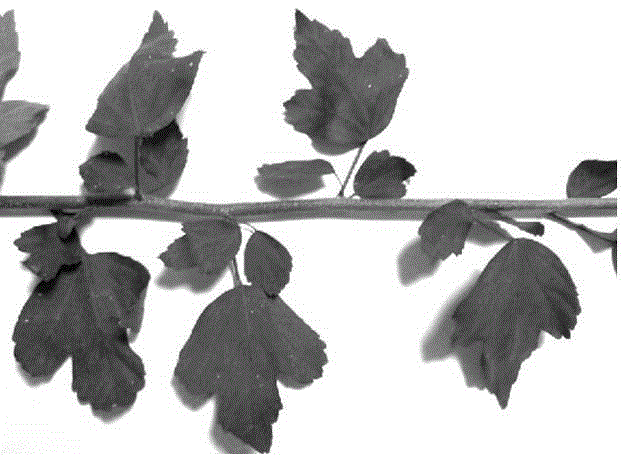Plant shampoo and preparation method thereof
A production method and shampoo technology, applied in the field of shampoo, can solve the problems of poor hair care effect, complex ingredients, single plant species, etc., and achieve the effects of improving cyclic growth and simple production method
- Summary
- Abstract
- Description
- Claims
- Application Information
AI Technical Summary
Problems solved by technology
Method used
Image
Examples
Embodiment 1
[0031] A plant shampoo of this embodiment is prepared from the following raw materials in parts by weight: 12 parts of Schizonepetae, 20 parts of hibiscus leaves, 15 parts of Passepartout, 10 parts of barnyard millet, 10 parts of lumpy Polygoni multiflori, 10 parts of tea bran , 10 parts of dried purslane (moisture less than 15%), of which hibiscus leaves are freshly picked hibiscus leaves, as attached figure 1 shown.
[0032] The tea bran is cooked tea bran obtained by pressing wild camellia oil fruits by steaming, pre-pressing and leaching.
[0033] A kind of preparation method of plant shampoo of the present embodiment, comprises the following steps:
[0034] 1) Grinding barnyard millet and tea bran into powder, the particle size of the powder is 200 mesh;
[0035] 2) Wash hibiscus leaves, Passepartout, dried purslane, nepeta and lumps of Polygonum multiflorum; add Passepartout to 20 times the total weight of shampoo ingredients in water, then heat to boil and boil for 1...
Embodiment 2
[0039] A plant shampoo of this embodiment is prepared from the following raw materials in parts by weight: 15 parts of Schizonepetae, 22 parts of hibiscus leaves, 12 parts of Passepartout, 15 parts of barnyard millet, 12 parts of Polygonum multiflorum powder, 12 parts of tea bran, 150 freshly picked purslane.
[0040] The tea bran is cooked tea bran obtained by pressing wild camellia oil fruits by steaming, pre-pressing and leaching.
[0041] The Polygonum multiflorum is Radix Polygoni Multiflori powder.
[0042] A kind of preparation method of plant shampoo of the present embodiment, comprises the following steps:
[0043] 1) Grinding barnyard millet and tea bran into powder, the particle size of the powder is 150 mesh;
[0044] 2) Wash hibiscus leaves, Passepartout, purslane and nepeta; add freshly picked purslane to water 10 times the total weight of shampoo ingredients, then heat to boil and boil for 75 minutes; filter purslane The boiled water of amaranth, remove the p...
Embodiment 3
[0048] A plant shampoo for this implementation is prepared from the following raw materials in parts by weight: 10 parts of nepeta, 25 parts of hibiscus leaves, 18 parts of Passepartout, 8 parts of barnyard millet, 15 parts of Polygonum multiflorum powder, 10 parts of tea bran, and 15 parts of Dried purslane (moisture less than 15%), 4 parts of thickening powder, 0.2 part of drawing powder, 75 parts of high foaming essence, and 0.5 part of Kason.
[0049] The tea bran is cooked tea bran obtained by pressing wild camellia oil fruits by steaming, pre-pressing and leaching.
[0050] The Polygonum multiflorum is Radix Polygoni Multiflori powder.
[0051] A kind of preparation method of plant shampoo of the present embodiment, comprises the following steps:
[0052] 1) Grinding barnyard millet and tea bran into powder, the particle size of the powder is 200 mesh;
[0053] 2) Wash the hibiscus leaves, Passepartout, dried purslane and nepeta; add Passepartout to water with 18 times...
PUM
| Property | Measurement | Unit |
|---|---|---|
| Particle size | aaaaa | aaaaa |
Abstract
Description
Claims
Application Information
 Login to View More
Login to View More - R&D
- Intellectual Property
- Life Sciences
- Materials
- Tech Scout
- Unparalleled Data Quality
- Higher Quality Content
- 60% Fewer Hallucinations
Browse by: Latest US Patents, China's latest patents, Technical Efficacy Thesaurus, Application Domain, Technology Topic, Popular Technical Reports.
© 2025 PatSnap. All rights reserved.Legal|Privacy policy|Modern Slavery Act Transparency Statement|Sitemap|About US| Contact US: help@patsnap.com

